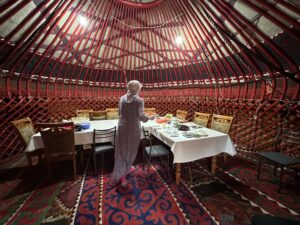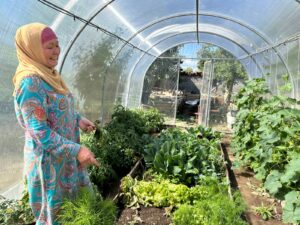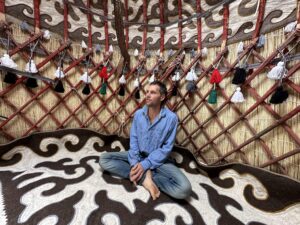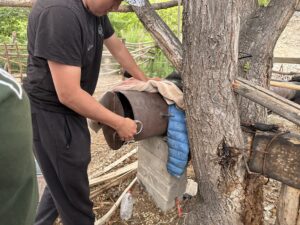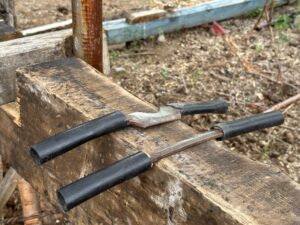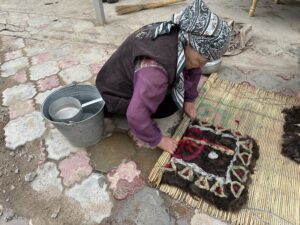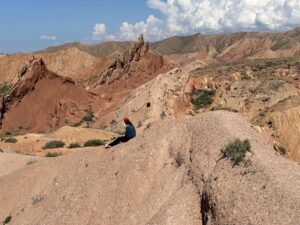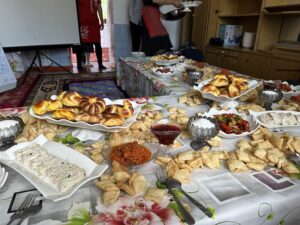In June 2024, Jona Elfdahl and Etta Säfve, permaculturalists and artists at Gylleboverket, traveled to Kyrgyzstan to meet CAG’s local partner, El Too, and visit permaculture projects in the northern region of the country. Read their story below.
The snow-capped mountain peaks surround us as we lie in the waters of the turquoise lake. Soon the sun will set, and we will settle into the yurt that will be our home for a few days during our two-week stay in Kyrgyzstan.

We are here to visit and exchange experiences and knowledge with seven different sites that have started transitioning toward self-sufficiency through permaculture. The goal is to increase food security, access fresh vegetables and fruits, promote biodiversity, care for the soil, and strengthen the social bonds already thriving here.
The project is run by Kyrgyz organization El Too, in collaboration with Central Asia Solidarity Groups in Sweden. It is after a visit to our farm by one of El Too’s team members that we were invited to further this collaboration.
This journey takes us through beautiful landscapes and meetings with fantastic people who, with curiosity, joy, and a passion for experimentation, have taken on permaculture principles and methods to integrate them into their lives. There’s a strong focus on cultivation, driven by the urgent need to grow a variety of vegetables in very challenging environments.
We encounter projects where fruit trees and perennials are successfully grown in the middle of a stone desert. It’s an exciting project where they’ve also built a dam to collect rainwater to benefit the crops.
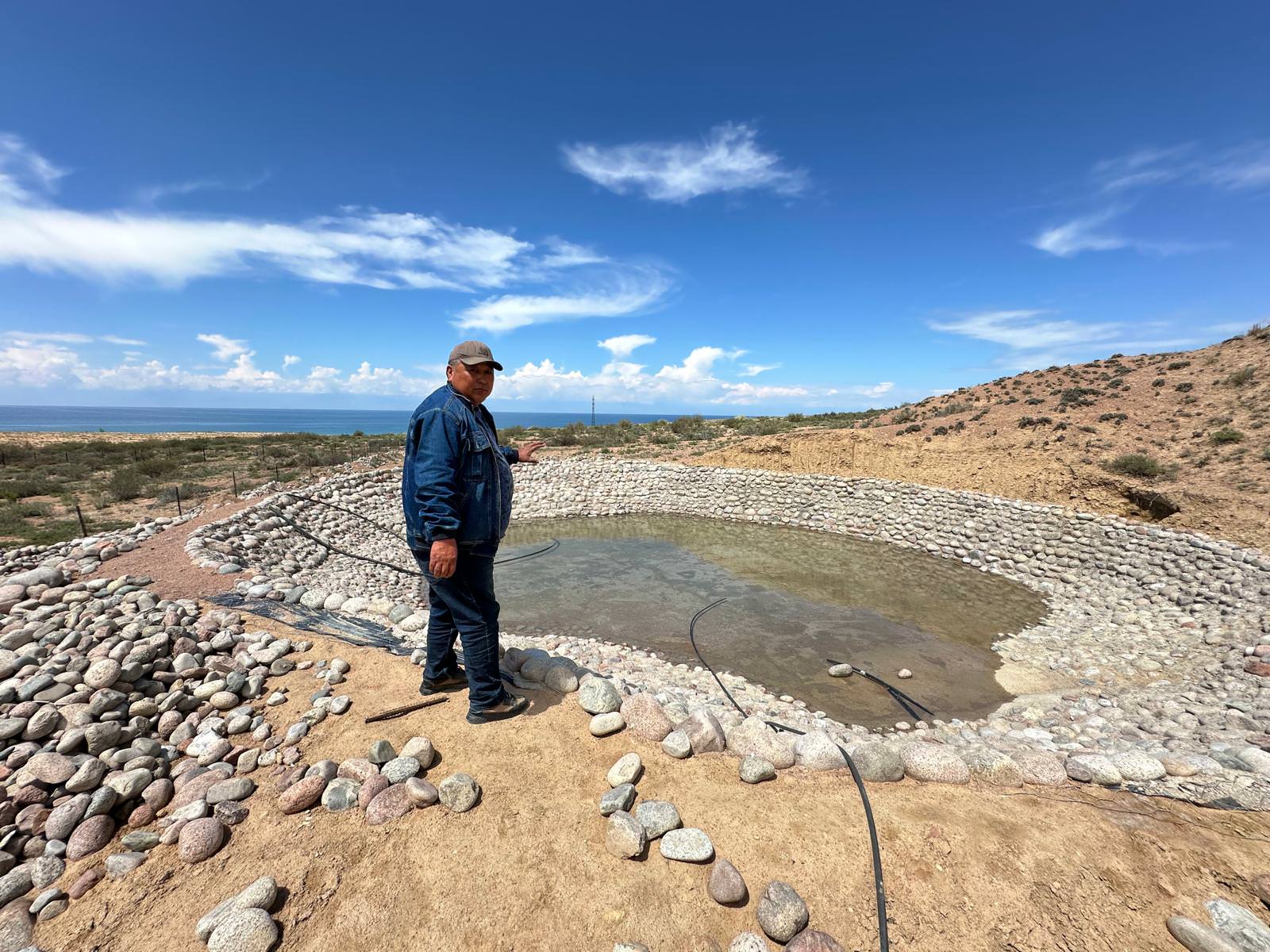
We gain many ideas here on how to continue working on building the regenerative farming systems that have already been started. For instance, we meet a woman who has built a combined chicken coop and greenhouse. In another village, we meet people growing crops under mature fruit trees.
There, they’ve expanded their harvest under the trees from primarily potatoes and currant bushes to include a wide variety of crops. This method of growing under trees, known in permaculture as forest gardening or food forests, has long been a strategy here, where walnut, apple, and cherry trees co-exist with berry bushes.
They’ve also started producing bio-humus, which, according to the stories we hear, has worked very well in building fertile soil.

The project participants seem happy with the new crops they’ve been able to grow using permaculture principles. They’ve also gained a stronger sense that their long-standing method—mixing trees with annual plants and perennials—is a good way for them to harvest. It’s clear from our visits that it truly works.



We do see some challenges, mainly around water management — either the sites are prone to drought or occasional flooding in combination with heavy clay soil. We see that some practices, like mulching, could be explored further to build soil that retains both moisture and nutrients. Fine-tuning and developing their water management systems is another key area for future work.
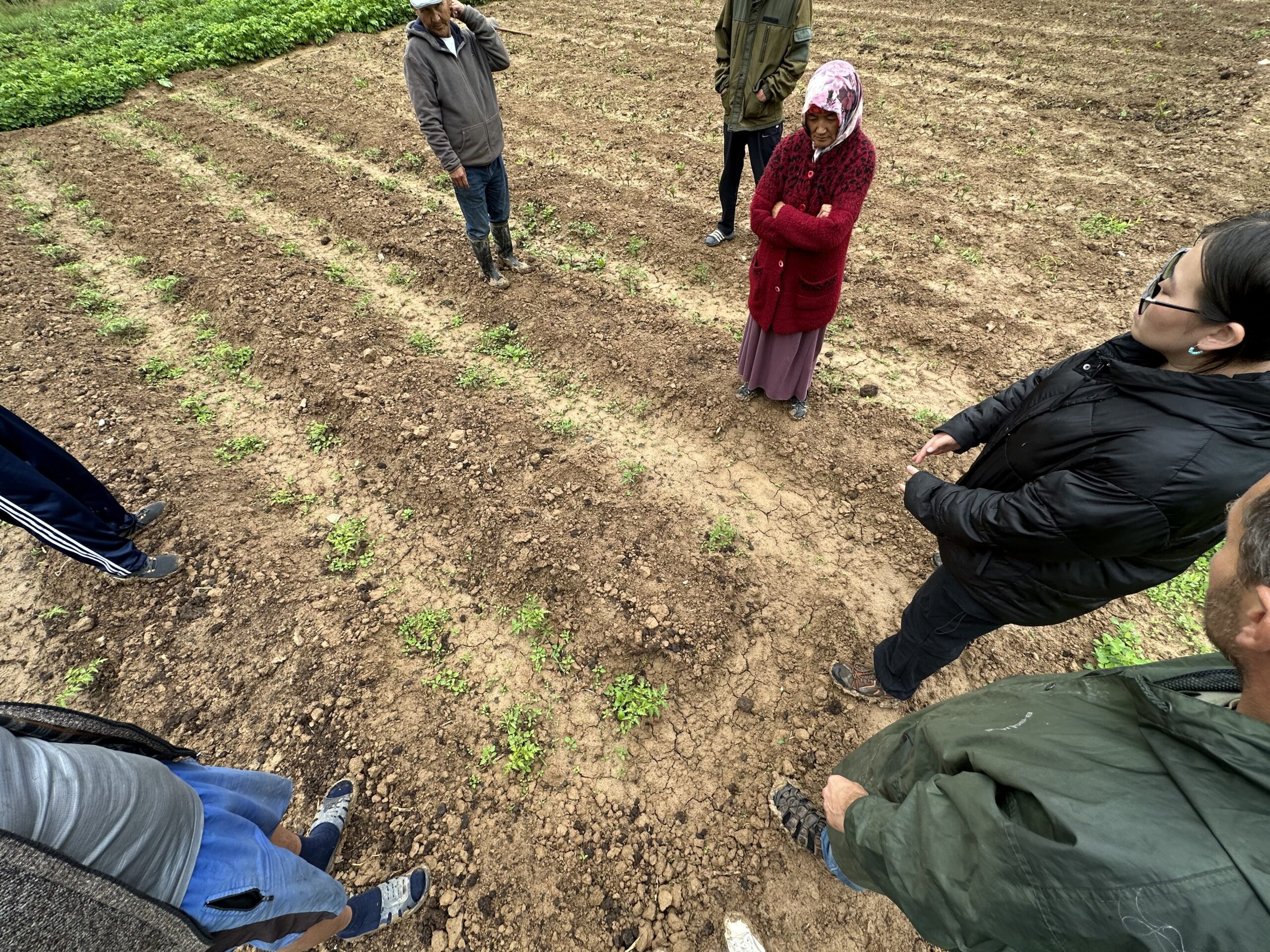
During our weeks in Kyrgyzstan, we also experience a vibrant village community. It’s wonderful to witness how they support each other in trying new things and experimenting. We encounter a culture of “do-it-yourself” knowledge and skills passed down for generations, which is very inspiring compared to our Swedish consumer culture, where everything you want or need can be bought. Here, we learn how to create felt from a woman who spent seven years crafting the yurt we’re sitting in, with every band, thread, and rope spun by her and her family.
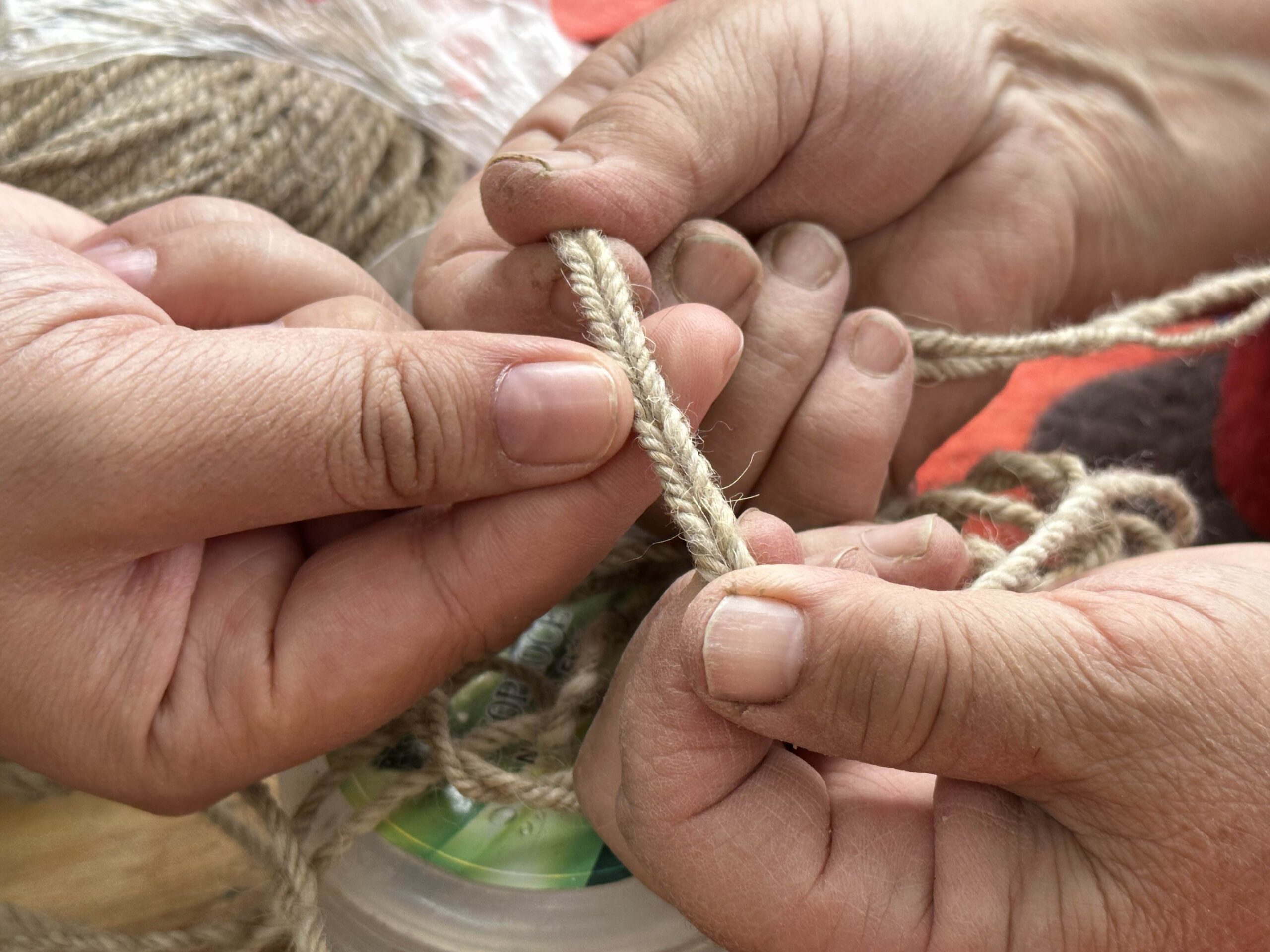
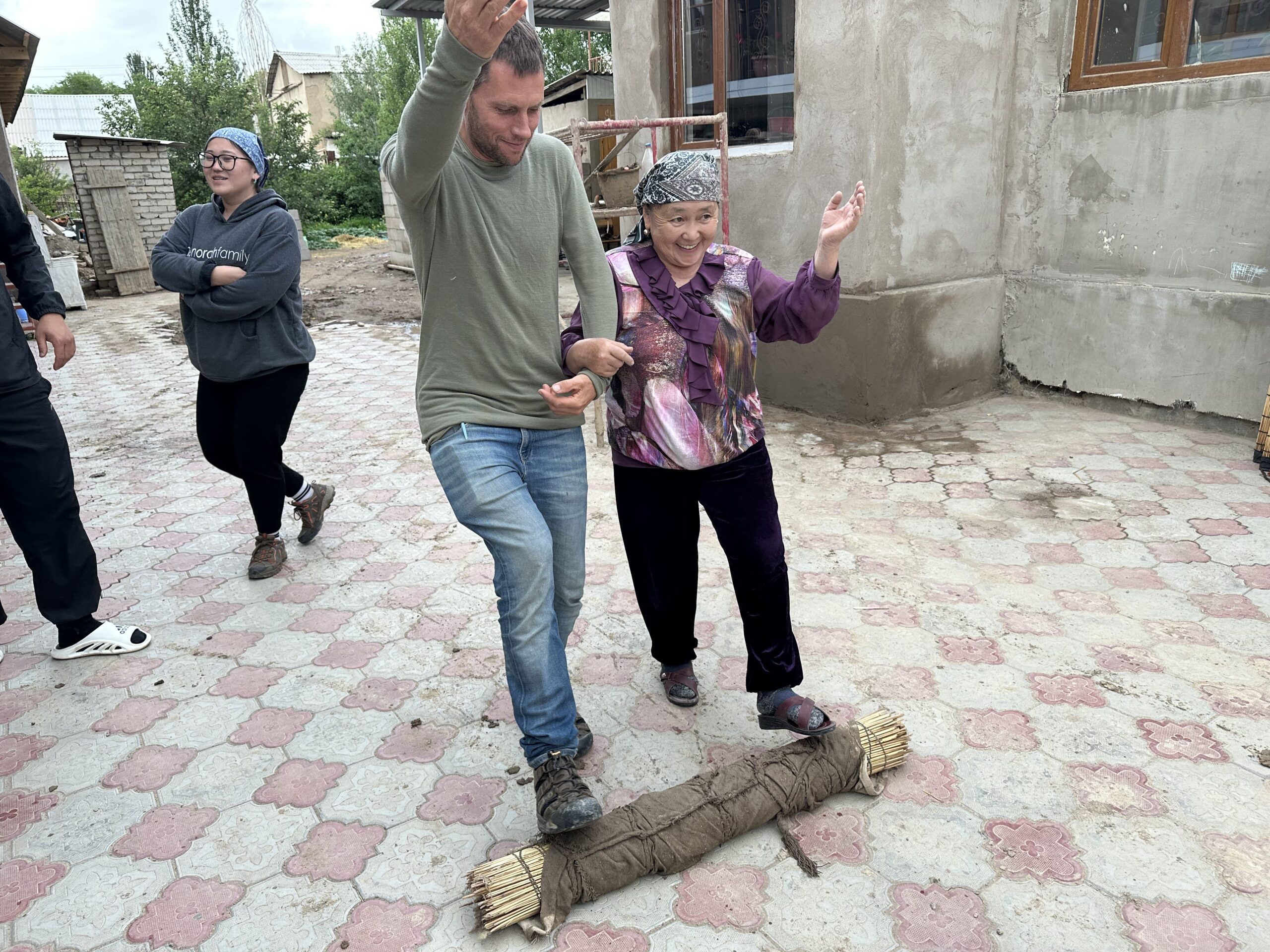
Stories and encounters reflect hospitality and social structures where not only the DIY spirit thrives, but also a “do-it-together” culture where solidarity, knowledge exchange, sharing seeds, crops, food, and generous smiles are a natural part of being human.
With great gratitude, we look forward to seeing you again!
Etta Säfve and Jona Elfdahl


